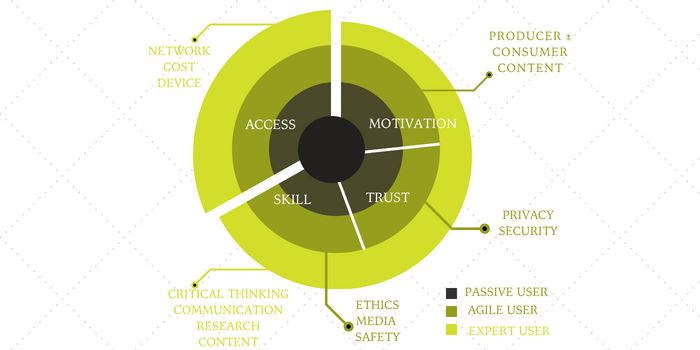By Nasubo Ongoma |
Digital divide is mostly linked with access, the means to bring more people online. The Merriam Webster dictionarydefines it as “the economic, educational, and social inequalities between those who have computers and online access and those who do not”. To bridge the gap, requires a proper interpretation of what it means to go online and what prevents one from going online. Economic inequalities involves the cost of access, devices used, pricing and network availability. Educational inequalities are the skills needed to go online and how to communicate it. Social inequality entails how different populations differ in their ideologies. According to ITU, there are several factors to consider to bridge the digital divide, 1) readiness in terms of the network infrastructure, 2) intensity, measuring the level of ICT usage and 3) impact, which are results and outcomes.
Herein, we define how our digital literacy program is working towards bridging the gap. For starters, we had to define who an internet user is, who an ideal Internet user is and the journey to become an ideal user. An ideal Internet user is one who understands the nuances of connectivity and eventually produces content online. We see that the user journey is usually the same for all people, you start as a non user to a user. It is only after you become a user that differences emerge, we define this using user journeys, in three classifications.
1) Passive users, those who have some engagement on the Internet, but lack access or with have a limited digital knowledge, therefore do use the full capability of Internet. 2) Agile users often use the Internet and are thirsty to gain more knowledge on how to enrich/enhance their experience online. They are often ready to learn new technologies to adapt to the ever-changing digital space. 3) Expert users are mostly online, and have curved their space online. These users are always looking for new ways to use technology to enhance and protect their space online. One of the most critical things that differentiate these user groups is their learnability, the measures put in place to learn and adapt in the digital space.
Every user journey is premised on her/his motivation or learning patterns as shown in the infographic below.
 Figure 1: Internet User Journey
Figure 1: Internet User JourneyTwo weeks ago, I spoke on how to survive the digital age, which requires access to technology, the skills to navigate, the motivation to consistently go online and trust in the system. Access plays a big role in bridging the digital divide gap, without it, no one can go online. Skill, includes, mode of communication, the language (factor in persons living with disabilities). Trust how do you protect yourself online, how much information is too much? Motivation, what enables you to want to get online and use the Internet consistently? What motivates you to acquire more skills and move from an Internet consumer to a producer and consistently churn out content?
Figure 2 is a conceptual model of on the internet user who moves from a passive user to an expert user. It shows the skills users learn at every stage of the journey.

Passive users have the motivation, access but their skill level is not strong enough to enable them do a lot online. Their motivation may wane off which contributes to their inconsistent usage. Agile users started off as passive users, but their motivation levels were strong enough to move them from a passive user. Expert users are also agile users, but they apply critical thinking, great communication skills, research and enrich the online space by actively producing content.
Our motivation is to have citizens who enjoy going online for diverse reasons and are consistently learning to enhance their experience and eventually become content producers. This is a concerted effort that requires a multilevel approach to bridge the digital divide gap.
